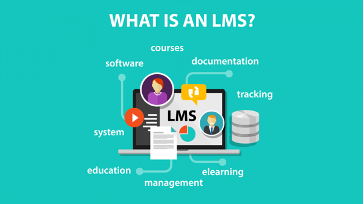Grace Watson’s Updates
Update 5: Educational Innovation
Technology has been integrated into education in many ways, all in hopes of deepening student learning and enhancing their educational experiences. An example of an educational innovation that is used in many schools is Learning Management Systems. “In an LMS, the interaction happens through devices that enable communication either synchronously or asynchronously, allowing the creation of different strategies to encourage a dialogue and active participation of students” (Oliveira et al. pp. 160). During the time of e-learning when students were expected to engage in learning at home, LMS was crucial in organizing student work, providing communication lines between teachers students, and parents, and delivering content that students can access and engage in regardless of their location. The figure below represents what a Learning Management System can do for educators, learners, and parents.
There are many different platforms that are deemed to be Learning Management Systems. A few examples of an LMS are Google Classroom, Canvas, Schoology, SeeSaw, and many more. While each of these platforms has unique features, they all have main concepts and features in common. The use of LMS in schools is transformative because it allows students to have more control over their learning because they can stay up to date with content even when they are not physically present in the classroom. Another advantage of Learning Management Systems is the use of online chat and discussion features. This promotes collaboration between students who may not always get a voice within a traditional classroom setting. Additionally, many Learning Management Systems have begun to incorporate modifications and accommodations to make learning more accessible to students of all different demographics. For example, Schoology and Canvas are two platforms that can adjust individual assignments to meet the needs of learners with IEPs or can even translate English assignments to a student’s native language. In a traditional classroom, these needs are not always addressed or met for students but are much more likely to be honored with the use of technology.
Reference:
Oliveira, P. C. D., Cunha, C. J. C. D. A., & Nakayama, M. K. (2016). Learning Management Systems (LMS) and e-learning management: an integrative review and research agenda. JISTEM-Journal of Information Systems and Technology Management, 13, 157-180.


